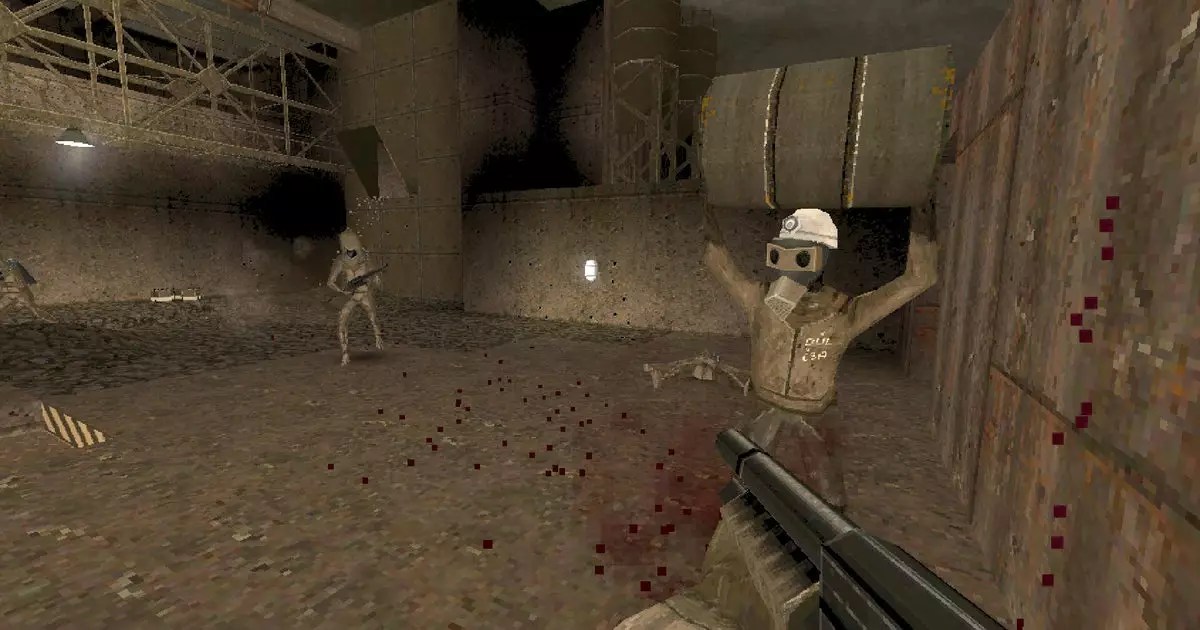In the world of video gaming, bugs can sometimes lead to unintended comedic moments or, conversely, to irritating experiences. This was recently underscored with the quirky yet problematic presence of barking dogs in the indie shooter game Hrot. Developed by the creative mind Spytihněv, Hrot draws inspiration from classic games like Quake, combining nostalgia with a unique central theme that takes place in a post-apocalyptic Czech Republic. However, an unforeseen sound glitch—where dogs incessantly barked in a loop—became a topic of frustration for players.
After over a year and a half in early access, the developers behind Hrot were faced with a surprising backlash: persistent and annoying dog barking. As Spytihněv noted in a recent update, this issue was not merely a negligible complaint. Players found themselves enduring a cacophony of barks, which on certain PC setups turned into an “unbearable” audio loop. The developer was taken aback by how many users reported this issue, reiterating that what was perceived as a simple quirk by some was, in fact, a major disruption for many others.
The irony is that while some players enjoyed the thematic elements of the dogs—often akin to assisting in rat-hunting missions—others found these canine companions a source of exasperation. Some feedback on Steam hinted that the glitch seemed particularly prevalent on Linux-based systems. This raised questions about the quality assurance processes in place when a bug can survive in a game for nearly two years without proper correction. Spytihněv’s sentiment of shame resonates with anyone who has dedicated time and passion to a project; it highlights how something meant to enhance gameplay can turn problematic when not managed properly.
What does this tell us about the design and experience of gameplay? Certainly, Hrot is not the first game to face such unique predicaments. Many players might even argue that glitches provide a certain charm or comic relief—think about games notorious for their hilarious bugs that have entered pop culture. However, when immersion is broken by sounds that repetitively claw at the ear, the balance between charm and irritation can tip dramatically.
Spytihněv’s acknowledgment of prior negative reviews emphasizes a key component of gaming: the feedback loop between developers and players. Gaming, particularly indie gaming, thrives on this dialogue, where the developers take cues from user experiences to refine their creations and enhance enjoyment. Players are not just passive consumers; they engage with the content, providing critical insights that can lead to transformative changes in game mechanics.
Despite the barking issues, Hrot’s world stands out. The rich tapestry of its narrative—the fusion of socialist satire with post-apocalyptic anxieties—provides the backdrop for a unique gaming experience. As players traverse through abandoned districts of Prague, encountering symbols from Czechoslovakia’s tumultuous history, they are not simply engaged in a shoot-’em-up; they are traversing a landscape filled with socio-political commentary.
Rick’s review touches on this notion, illustrating a poignant moment where players embrace an atmosphere steeped in nostalgia and dark humor. The absurd imagery of battling a gas-mask-wearing horse or fighting a doppelganger of a contemporary political figure on a bear underscores the developers’ intention to blend absurdity with commentary. This juxtaposition creates a game that is as much about gameplay as it is about narrative depth and cultural critique.
The transition of Spytihněv from a shooter like Hrot to a retro RTS titled Shrot marks an intriguing evolution in his game design journey. The concept of mixing various elements—including the morose with the whimsical—continues to stimulate curiosity within the gaming community. By adopting distinct themes, such as the nostalgic blend of tractors and techno music in Shrot, developers like Spytihněv are paving the way for innovative strategies that defy conventional genre confines.
While the incessant barking of a dog can temporarily convolute a gaming experience, it can also become a catalyst for improvement, ultimately leading to a more refined product. Games like Hrot remind players of the delicate balance between technology and creativity—how bugs may disrupt but also inspire change. By learning from these mishaps, developers can craft experiences that resonate more deeply with the gaming community, driving both innovation and enjoyment forward.


Leave a Reply